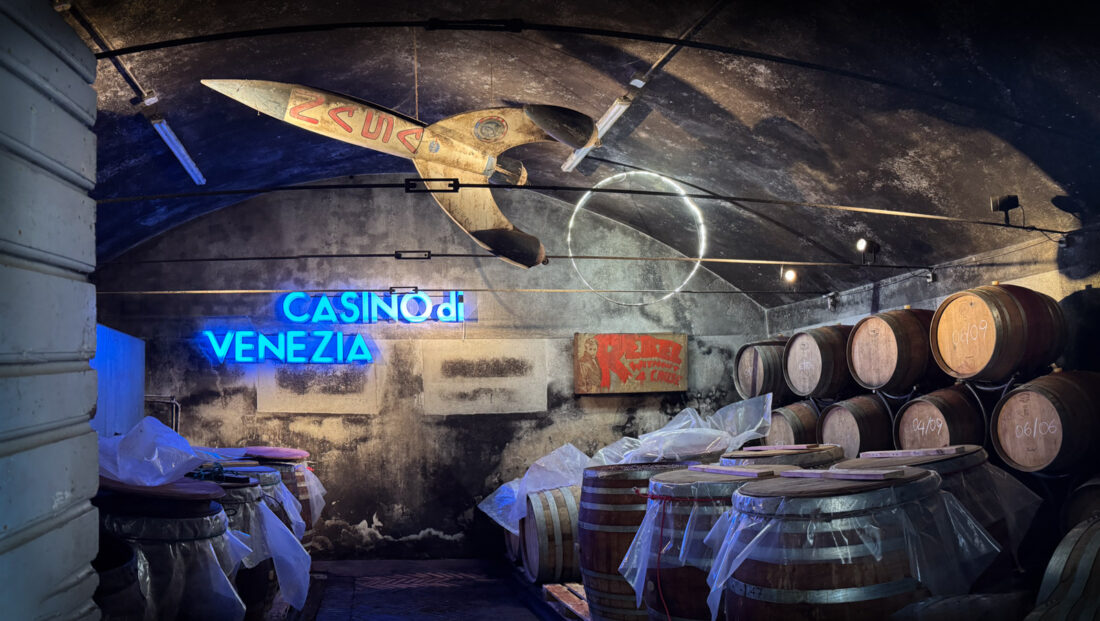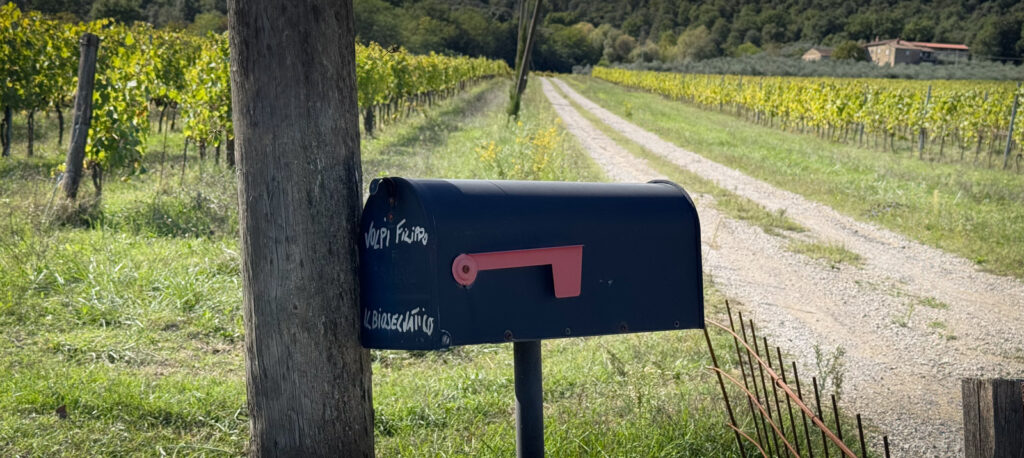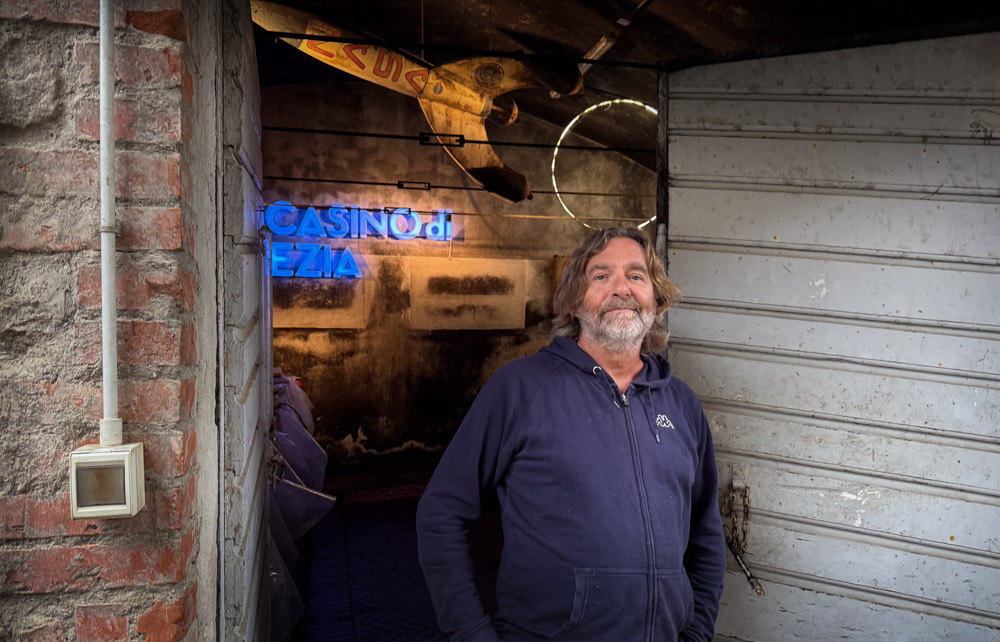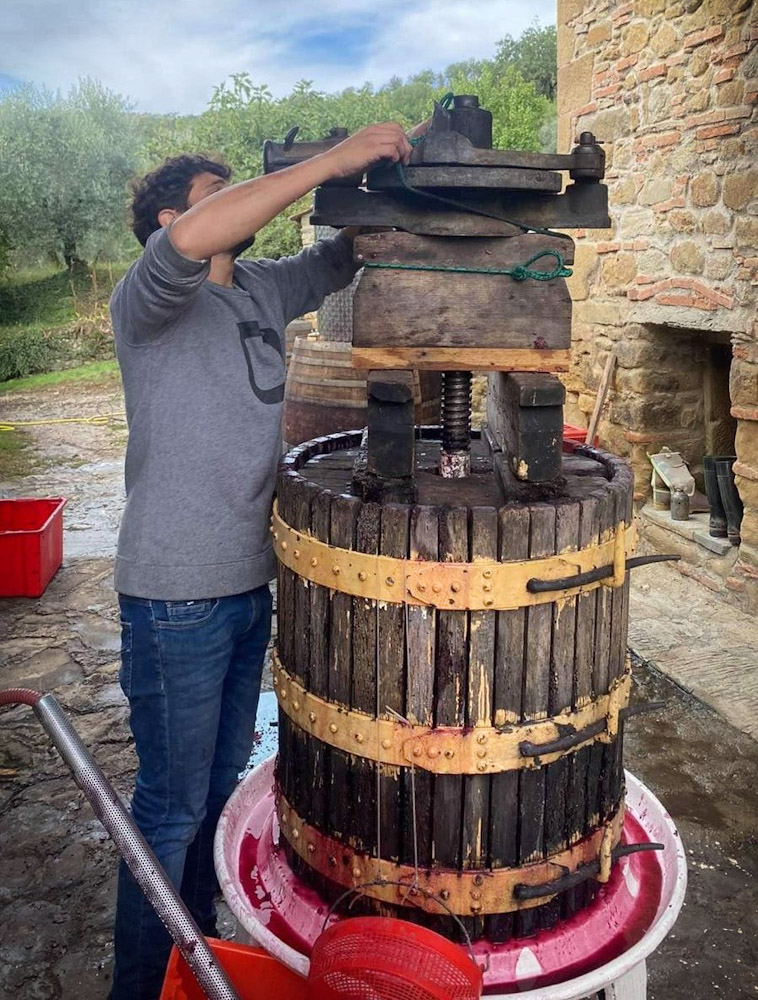
Getting to the Bottom of Italian Wine
“Don’t worry, I wash really well before I get into the barrel to crush the grapes,” Filippo told me.
My visit to Filippo Volpi’s winery—note that the word “winery” is not linked as there is no website—started at one of our favorite local restaurants, a Slow Food gem. The wife (he’s in the kitchen, she’s front of house and always greets me enthusiastically by name when I call for a reservation) highly recommended a local, organic wine from Il Bioselvatico. The full perfection of the winery’s name, which means “The Wild Organic” became clear only later. We loved this wine. After two bottles—for the record we were with friends—we decided that we had to learn more and buy some. This was a bit of a challenge as we could only locate a not-frequently-updated Facebook page and a bunch of great reviews. I contacted the owner via Messenger and mentioned where we had encountered his wine, and he encouraged us to come by.
Living for years near Napa Valley, traveling a lot in France, and now living in Italy, I’ve been to my share of big, fancy and small boutique wineries, and thought I knew the drill. Nothing even remotely prepared me for our visit to Il Bioselvatico.
The first surprise was finding it. We entered the address into our GPS and arrived via a tiny country road to a driveway. I was looking around for some sort of sign that marked an entrance to a winery, but there was nothing. We finally found the handwriting on the mailbox.

At the end of a dirt track we pulled up to a house with a couple of outbuildings in the middle of fields of grapevines. Filippo yelled to us from a balcony about where to park and a bearded man with sparkling eyes came out to greet us. He invited us into his house for a coffee, then to the adjoining building where he makes wine. It didn’t take long to show us around. It’s a small operation. It’s only him, working the land he inherited from his father and aunt, and doing everything by hand.
Filippo is charming and passionate, producing wine with ancient techniques, organic and with no added sulfites. He started making wine in 2015 after spending years working in fine restaurants and learning about wines in Burgundy. His wines have gained a devoted following, mainly bought by restaurants. A Michelin one-star chef had called that day about purchasing some of his wine.
The old vines are only one type of grape, Sangiovese, and he has just ten acres. The vineyard is located at the intersection of four Tuscan valleys, one of which is the Val di Chiana, famous for its Chianina beef. Filippo said he gets a couple of these huge cows which graze loose in the fields, eating the grass and doing their bit for fertilizing the vines. After which, he told me, they are very delicious.

All the processing and aging of the wine happens in one room. There are no tastings offered or fancy cellars. He makes only one wine each year, 100% Sangiovese. He picks the grapes from the fields daily as they ripen and presses them throughout the harvest season, adding to the complexity of the wine. There is only one piece of machinery, which he uses only a couple of times a year, this pump.

The grapes are pressed by hand, eschewing modern techniques. Or rather, by more than hand. Filippo showed us two rows of barrels. Between the loose fitting wooden lids and the stew of grapes were sheets of heavy plastic, secured by large bungee cords. Several of the barrels had been pressed four times, others only once. We asked how they were pressed. Standing next to the barrels, the contents of which came to his belly, he said he gets in and stomps. Neither John or I had the courage to ask exactly what he wore during these pressings. After his careful nod to hygiene, noted above, and the sanitation guidelines on the door—plus the fact that we were alive and thriving after having two bottles over a week before—I felt reassured.

After the wine gets adequately macerated by his vigorous actions in the barrel it gets taken outside for the final press.

He was all out of the 2020 vintage, which we had loved, and he hadn’t had a chance to put the labels on the 2021 bottles yet so they weren’t for sale. He did have some magnums of 2020, so we bought two. He described the 2020 as very elegant, and the 2021 as more intense. Every year is very different, he said.
I can’t believe what he has pulled off. We’d visited an organic winery in this same area a couple of years ago where a couple was working hard to make it successful. The only way they could do it was for each to work full-time, and to run an agriturismo in some restored outbuildings, saving the winery work for the time leftover. The wine had been underwhelming, as much as we wanted to like it. What Filippo has accomplished with his ten acres, manual labor, cows, and traditional techniques is impressive.
A few comments that I noted about the wine and the unconventional way it’s made:
“Up front the taste is elegant but in the rear there is a hint of something unexpected.”
“While drinking this wine, and savouring the story of how it is made, I wish this glass was bottomless.”
“Grapes won’t be the only shriveled fruit that went into making this wine.”
“The 2020 vintage, often described as elegant, will leave you wishing there was no end to it.”
“This wine is everything you want it to be… and a weenie more.”
Bottoms up. Thanks again for reading.






No Comments